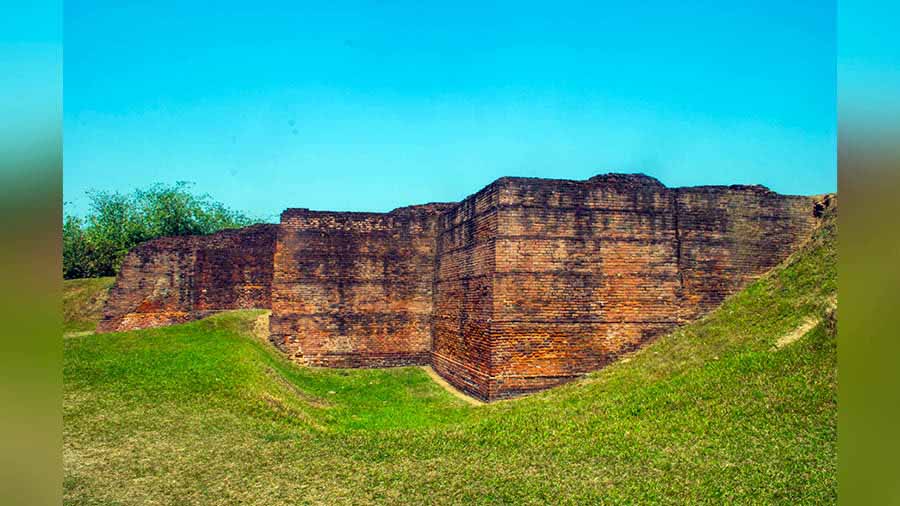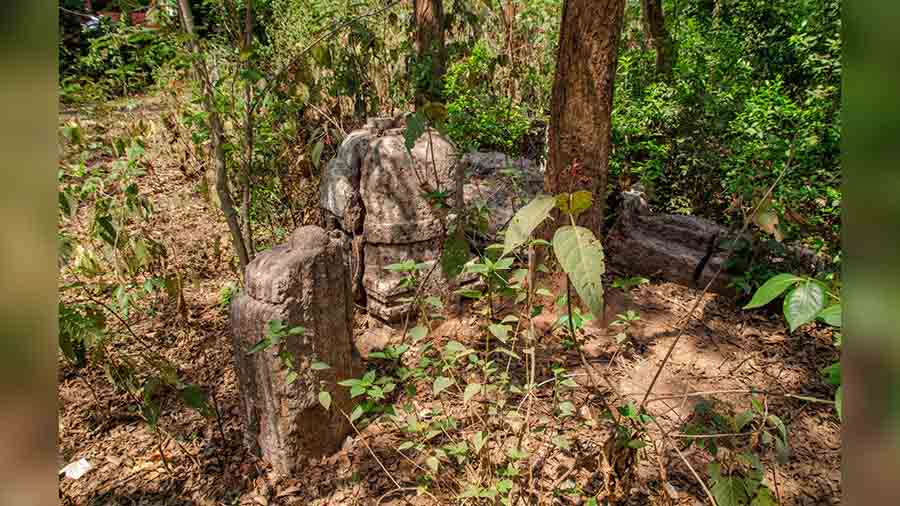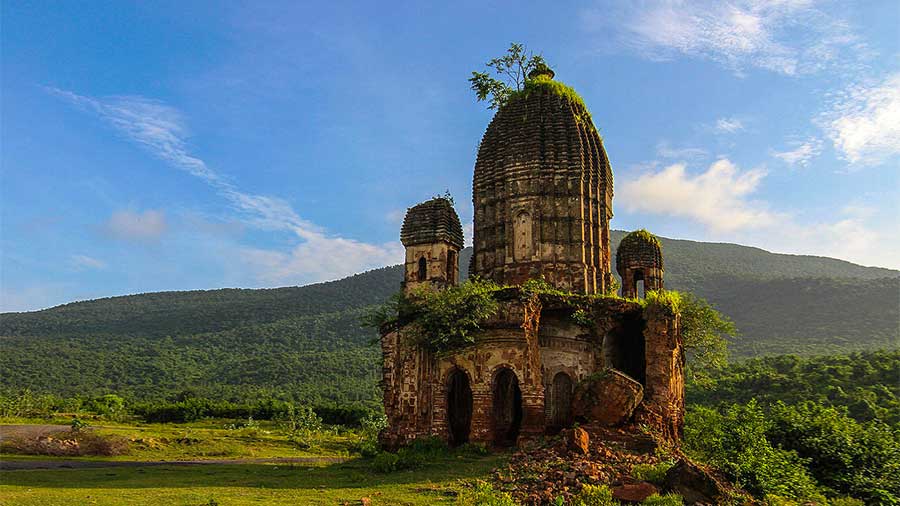Ballal Dhipi, or the Mound of Ballal Sen, is an archaeological site in Nadia district of West Bengal, near the famous pilgrimage site of Mayapur. For centuries, a 30-foot-high mound in the village of Bamanpukur has been a mystery to the local residents. It is known as Ballal Dhipi, named after Ballal Sen, of the Sen Dynasty, who ruled Bengal in the late 12th century. It was only in the late 1970s that the Archaeological Survey of India (ASI) took the initiative of a proper scientific survey of the mound covering an area of 1,300 sq ft. Soon, the excavation started and was carried out in two phases — in 1982-83 and 1988-99. The excavation revealed a gigantic brick structure in an extensive yard surrounded by walls.
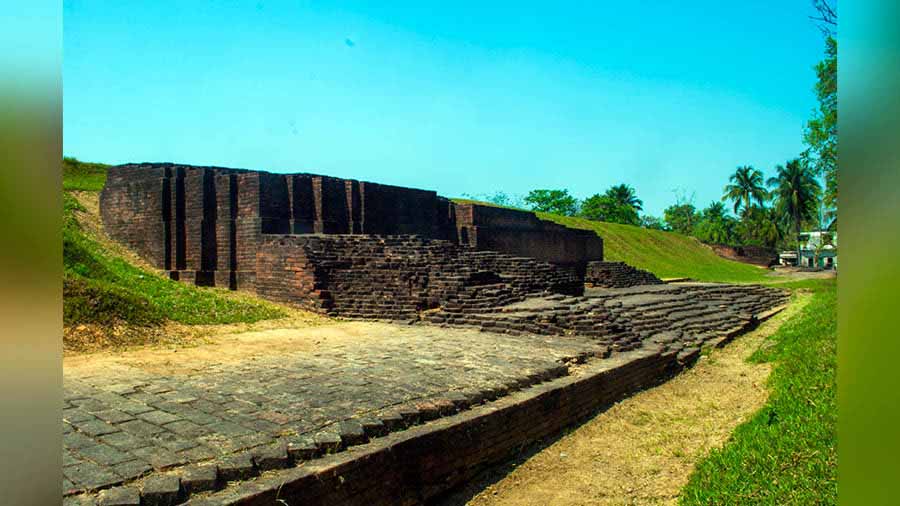
A portion of the outer wall of Ballal Dhipi
Also revealed were stucco heads, terracotta human and animal figurines, copper utensils and other objects but that was not enough for the archeologist to determine the period of the ruins. Nor was there any evidence to establish a direct contact with Ballal Sen. Archaeologists found a superimposition of structure, meaning that the structure on top was built over an earlier one. The upper remains, dating back to the 12th century CE, were built over an earlier structure dating back to the 8th and 9th century CE. Some historians opine the ruins to be remains of the lost city of Vijapur, the capital of the Sen Dynasty. Vijapur, founded by Vijay Sen , father of Ballal Sen, was an advanced urban centre and a metropolis of the Sens.
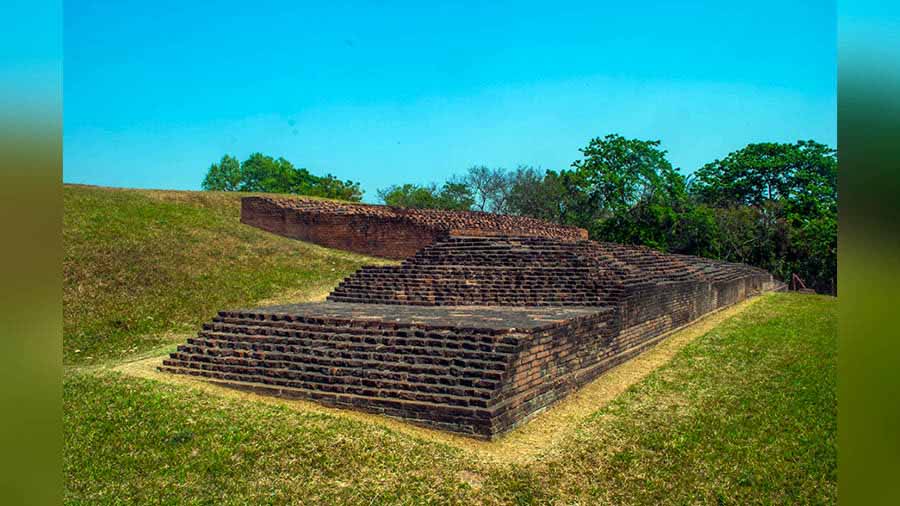
Another portion of the outer wall of Ballal Dhipi
Nothing is known about the reason for the destruction of such a magnificent citadel. Was it destroyed by invaders or was it abandoned due to natural calamities? With no concrete evidence, the historians are still in the dark. So whatever may be the reason, Ballal Dhipi can serve as a perfect winter day-outing destination for Kolkatans.
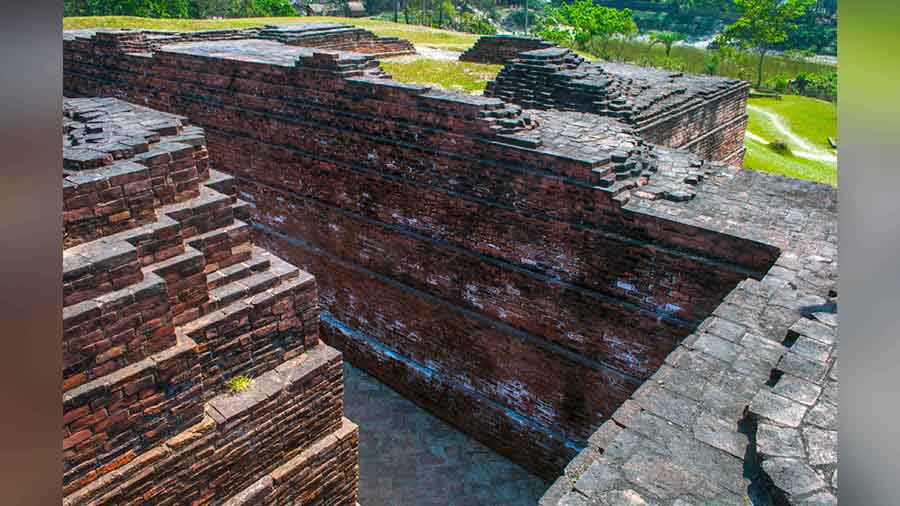
A top view of the main structure
Today, the huge structure has been beautifully landscaped and well maintained by the ASI. It is also well connected from the district headquarters Krishnagar by public transport. From Krishnagar, Mayapur bound buses lead to Bamanpukur Bazar and from there Ballal Dhipi is just a few minutes walk away.

Arrangement of bricks at the site
A flight of stairs takes you to the top of the mound. On the left are some minor structures but the gigantic structure lies on the right. On the top of the dhipi (mound) the stairs merges to a brick path leading you straight inside the gigantic structure. It ultimately leads to a narrow roof-less passage flanked by high walls on either side, leading you to the backside of the structure, offering a gigantic view of the structure.
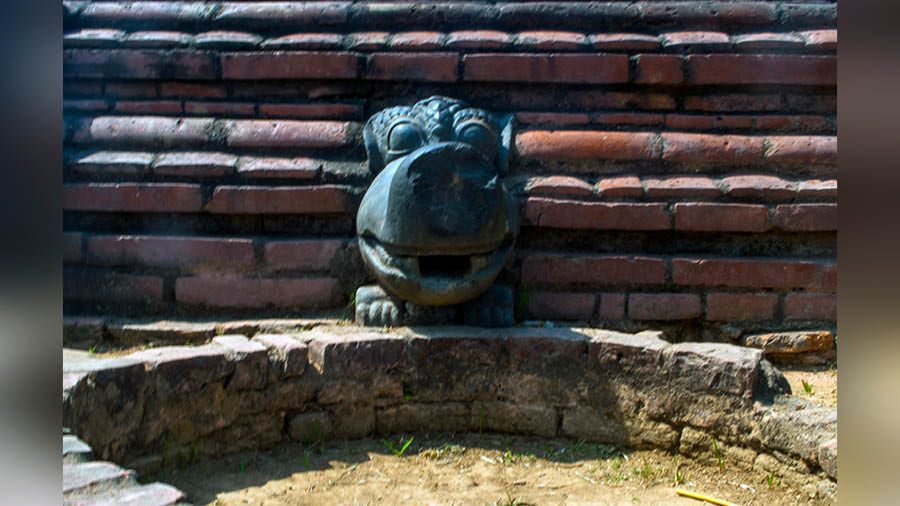
A stone crocodile head, which probably served as a water outlet
Located at the base of the main structure is a stone built crocodile head, which probably served as a water outlet. This is the only stone figure that can be seen in the complex. The other statues and figures have been removed to the Asutosh Museum of Calcutta University. Apart from the central structure the extensive yard is surrounded on all sides by an enclosure wall. The wall, which exists only in fragments, is decorated with beautiful brickwork. The wall, which is several feet thick in some places, is enough to explain the sheer magnitude of the structure.
